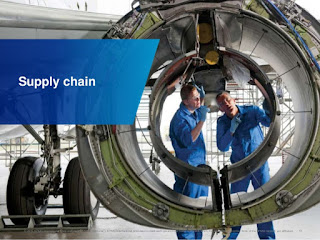Any supply chain in the aerospace industry has OEMs (the traditional big players of aircraft manufacturing) and suppliers, which can be categorized into Tier 1, Tier 2 and Tier 3 parties. OEMs are responsible for the final design and manufacture, the most critical part of the supply chain. They deliver their orders to the Tier 1 suppliers, who in turn pass on their aircrafts parts requirements to the Tier 2 suppliers. Tier 3 suppliers provide some of the basic components that are required by the suppliers and are higher than them in the value chain.
What to pay attention to?
The scenario is changing within the industry, with Tier 1 suppliers and airframe producers becoming a more integral part of the process. New strategies for reduced costs and improved efficiency made OEMs depend more on Tier 1 suppliers. That increased the risk for both, buyers and suppliers. But it also increased the transparency as far as schedules, plans and aircraft programs were concerned. The bigger players however, were focused less on internal production and more on integration.
Let us look at some key developments and how it is affecting the players within the aerospace ecosystem:
Engines
- There are 3 major players in the market that specialize in jet engine manufacturing. Rolls Royce (45% of new orders), General Electric (38% of new orders) and Pratt & Whitney.
- This is a segment that is naturally dominated by competitive pricing. Some of the engine manufacturers try and avoid problems by getting into exclusive supplier contracts with OEMs and other commercial airline producers. There are times when the manufacturers enter joint ventures to share high investments on things like future engine development and design.
- Most companies in this segment have generous profits. They often sell their engines at a low margin, so that they can get hold of lucrative MRO deals in the future, which increases their profits over time.
Aeronautics
- This market primarily consists of pilot assistant/interface systems like weather forecast, navigation, flight management and communication, along with electronic airline systems like anti-collision systems, system monitoring and flight controls.
- The avionics software market took a major hit due to the financial downturn and never managed to recover totally. However, the future seems brighter with the market expected to share the same fortunes as the aircraft manufacturing cycle.
Points to remember about MRO (maintenance, repair, and overhaul)
- Demand for this is created mainly by airline companies and this is expected to grow further with the number of aircrafts in operation set to go up in all regions.
- As most airlines are focusing on the core business of passenger transport, activities like MRO are getting outsourced to specialists. That generally helps bring down costs. On the other hand, companies are better equipped to handle.
- While the increase in number of airlines is great, one must remember that the demand for MRO will not increase in the same proportion. One of the primary reasons is the fact that the newer generation aircrafts require less maintenance work.
- A Capgemini report says the MRO market is expected to grow at about 4.4% till 2020. It earns the most amount of revenue (about 30%) from engine maintenance markets while the components section contributes to about 23% of the revenue with line maintenance and airframe structures manufacturer not too far behind at 21% and 15% respectively. The fact that the highest share of the market belongs to the OEMs is an added advantage for players in this segment.
